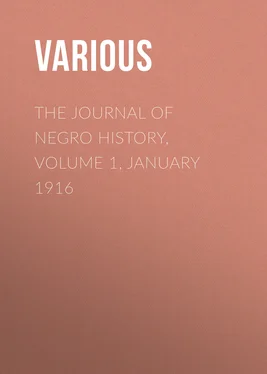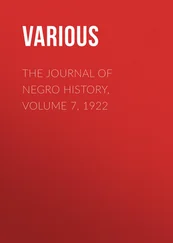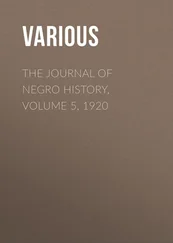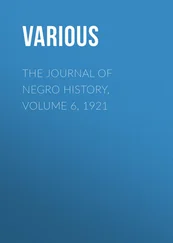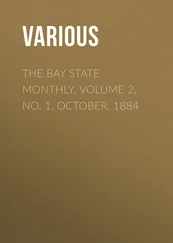Various - The Journal of Negro History, Volume 1, January 1916
Здесь есть возможность читать онлайн «Various - The Journal of Negro History, Volume 1, January 1916» — ознакомительный отрывок электронной книги совершенно бесплатно, а после прочтения отрывка купить полную версию. В некоторых случаях можно слушать аудио, скачать через торрент в формате fb2 и присутствует краткое содержание. Жанр: foreign_antique, periodic, История, foreign_edu, на английском языке. Описание произведения, (предисловие) а так же отзывы посетителей доступны на портале библиотеки ЛибКат.
- Название:The Journal of Negro History, Volume 1, January 1916
- Автор:
- Жанр:
- Год:неизвестен
- ISBN:нет данных
- Рейтинг книги:5 / 5. Голосов: 1
-
Избранное:Добавить в избранное
- Отзывы:
-
Ваша оценка:
- 100
- 1
- 2
- 3
- 4
- 5
The Journal of Negro History, Volume 1, January 1916: краткое содержание, описание и аннотация
Предлагаем к чтению аннотацию, описание, краткое содержание или предисловие (зависит от того, что написал сам автор книги «The Journal of Negro History, Volume 1, January 1916»). Если вы не нашли необходимую информацию о книге — напишите в комментариях, мы постараемся отыскать её.
The Journal of Negro History, Volume 1, January 1916 — читать онлайн ознакомительный отрывок
Ниже представлен текст книги, разбитый по страницам. Система сохранения места последней прочитанной страницы, позволяет с удобством читать онлайн бесплатно книгу «The Journal of Negro History, Volume 1, January 1916», без необходимости каждый раз заново искать на чём Вы остановились. Поставьте закладку, и сможете в любой момент перейти на страницу, на которой закончили чтение.
Интервал:
Закладка:
Living in a day when the Negro was the subject of much anthropological and physiological discussion, Doctor Smith could not resist participating in this controversy. There were at this time a number of persons who were resorting to science to prove the inferiority of the Negro. Given a hearing extending over several evenings, Doctor Smith ably discussed "The Comparative Anatomy of the Races" before an assembly of the most distinguished ladies and gentlemen of the city, triumphing over his antagonist. In 1846 he produced a valuable work entitled "The Influence of Climate on Longevity, with Special Reference to Insurance." This paper was written as a refutation of a disquisition of John C. Calhoun on the colored race. Among other things Doctor Smith said: "The reason why the proportion of mortality is not a measure of longevity, is the following: The proportion of mortality is a statement of how many persons die in a population; this, of course, does not state the age at which those persons die. If 1 in 45 die in Sweden, and 1 in 22 in Grenada, the age of the dead might be alike in both countries; here the greater mortality might actually accompany the greater longevity." 102
The first real impetus to bring Negroes in considerable numbers into the professional world came from the American Colonization Society, which in the early years flourished in the South as well as in the North. This organization hoped to return the free Negroes to Africa and undertook to prepare professional leaders of their race for the Liberian colony. "To execute this scheme, leaders of the colonization movement endeavored to educate Negroes in mechanic arts, agriculture, science and Biblical literature. Exceptionally bright youths were to be given special training as catechists, teachers, preachers and physicians. Not much was said about what they were doing, but now and then appeared notices of Negroes who had been prepared privately in the South or publicly in the North for service in Liberia. Dr. William Taylor and Dr. Fleet were thus educated in the District of Columbia. In the same way John V. DeGrasse, of New York, and Thomas J. White, of Brooklyn, were allowed to complete the medical course at Bowdoin in 1849. In 1854 Dr. DeGrasse was admitted as a member of the Massachusetts Medical Society. In 1858 the Berkshire Medical School graduated two colored doctors who were gratuitously educated by the American Educational Society." 103Dr. A. T. Augusta studied medicine at the University of Toronto. He qualified by competitive examination and obtained the position of surgeon in the United States Army, being the first Negro to hold such a position. After the war he became one of the leading colored physicians in the District of Columbia. Prior to 1861 Negroes had taken courses at the Medical School of the University of New York; Caselton Medical School in Vermont; Berkshire Medical School in Pittsfield, Massachusetts; the Rush Medical School in Chicago; the Eclectic Medical School in Philadelphia; the Homeopathic College of Cleveland; and the Medical School of Harvard University.
The next colored physician of prominence was Martin R. Delany. Delany grew to manhood in Pittsburgh, where early in his career he began the study of medicine, but abandoned it for pursuits in other parts. In 1849 he returned to that city and resumed his studies under Doctors Joseph P. Gazzan and Francis J. Lemoyne, who secured for him admission to the medical department of Harvard College after he had been refused by the University Pennsylvania, Jefferson College, and the medical colleges of Albany and Geneva, New York. After leaving Harvard, he, like Dr. Smith, became interested in the discussion of the superiority and inferiority of races, and traveled extensively through the West, lecturing with some success on the physiological aspect of these subjects. He then returned to Pittsburgh, where he became a practitioner and distinguished himself in treating the cholera during the epidemic of 1854. About this time his worth to the community was attested by his appointment as a member of the Subcommittee of Referees who furnished the Municipal Board of Charity with medical advice as to the needs of white and colored persons desiring aid. In 1856 he removed to Chatham, Canada, where he practiced medicine a number of years. Doctor Delany thereafter like William Wells Brown, an occasional physician, devoted most of his time to the uplift of his people, traveling in America, Africa and England. He became such a worker among his people that he was known as a leader rather than a physician. He served in the Civil War as a commissioned officer of the United States Army, ranking as major.
Up to this point the colored physician had appeared as an occasional or exceptional individual, but hardly as forming a professional class. Following the wake of the Civil War colleges and universities were planted in all parts of the South for the sake of preparing leaders for the newly emancipated race. Several medical schools were established in connection with these institutions. The rise of the Negro physician as a professional class may be dated from the establishment of these institutions. The School of Medicine of Howard University, Washington, D.C., and the Meharry Medical College at Nashville, Tennessee, proved to be the strongest of these institutions and today are supplying the Negro medical profession with a large number of its annual recruits.
Dr. Charles B. Purvis, who was graduated from the Medical College of Western Reserve University in Cleveland, Ohio, in 1865, is perhaps the oldest colored physician in the United States; and by general consent ranks as dean of the fraternity. He shared with Dr. A. T. Augusta the honor of being one of the few colored men to become surgeons in the United States Army. Shortly after graduation he was made assistant surgeon in the Freedmen's Hospital at Washington, D.C., with which institution he was connected during the entire period of his active professional life. The development and present position of the medical school at Howard University is due to Dr. Purvis more than to any other single individual. For several years he has been retired upon the Carnegie Foundation. Dr. George W. Hubbard, a distinguished white physician, dean of the Meharry Medical College, Nashville, Tennessee, has also been a great pioneer and promoter of the medical education of the Negro race.
At first, the Negro patient refused to put confidence in the physician of his own race, notwithstanding the closer intimacy of social contact. It was not until after he had demonstrated his competency to treat disease as well as his white competitor that he was able to win recognition among his own people. The colored physician is everywhere in open competition with the white practitioner, who never refuses to treat Negro patients, if allowed to assume the disdainful attitude of racial superiority. If the Negro doctor did not secure practically as good results in the treatment of disease as the white physician, he would soon find himself without patients.
According to the last census there were in the United States 3,077 Negro physicians and 478 Negro dentists. When we consider the professional needs of ten millions of Negroes, it will be seen that the quota is not over one fourth full. There is urgent need especially for an additional number of pharmacists and dentists. It must be said for the Negro physician that their membership more fully measures up to the full status of a professional class than that of any other profession among colored men. Every member of the profession must have a stated medical education based upon considerable academic preparation, sufficient to enable them to pass the rigid tests of State Boards in various parts of the country. The best regulated medical schools are now requiring at least two years of college training as a basis for entering upon the study of medicine. Under the stimulus of these higher standards the Negro medical profession will become more thoroughly equipped and proficient in the years to come.
Читать дальшеИнтервал:
Закладка:
Похожие книги на «The Journal of Negro History, Volume 1, January 1916»
Представляем Вашему вниманию похожие книги на «The Journal of Negro History, Volume 1, January 1916» списком для выбора. Мы отобрали схожую по названию и смыслу литературу в надежде предоставить читателям больше вариантов отыскать новые, интересные, ещё непрочитанные произведения.
Обсуждение, отзывы о книге «The Journal of Negro History, Volume 1, January 1916» и просто собственные мнения читателей. Оставьте ваши комментарии, напишите, что Вы думаете о произведении, его смысле или главных героях. Укажите что конкретно понравилось, а что нет, и почему Вы так считаете.
